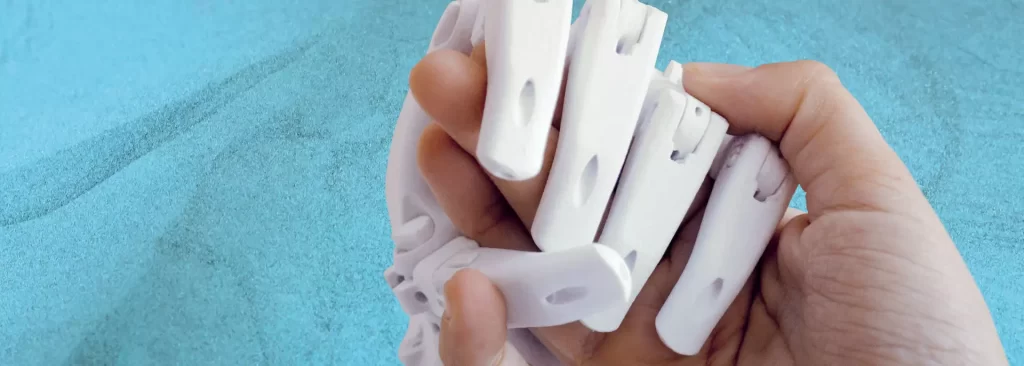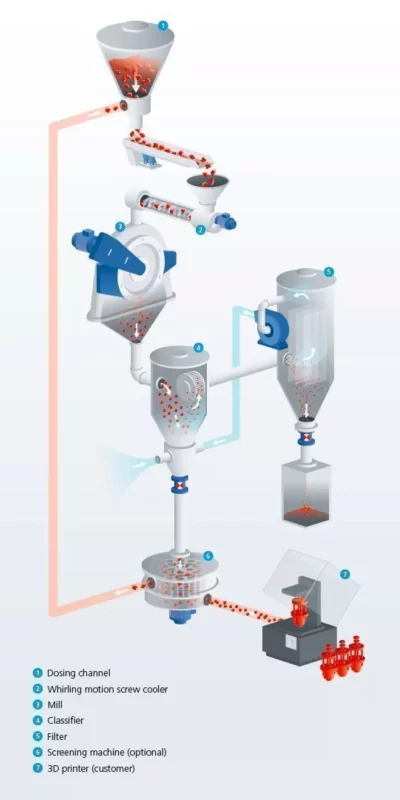
The manufacture of polymer products for 3D printing is increasingly becoming a genuine challenge, since the trend is moving towards ever finer products. In addition to limiting particle distribution in the upwards direction in the 70 – 100 μm range, dedusting is also often required in order to separate the amount of < 10 – 20 µm dust that interferes with printing. In order to achieve perfect results with which you can ideally work, you need specialists like us from Hosokawa Alpine.
In order to achieve perfect particle size distribution, two different processes are possible, depending on the product, batch size and task:
-
- INLINE: Grinding process with integrated screening / classifying
- OFFLINE: separate screening and / or classifying stage
Separation of coarser particles after grinding can in most cases be performed most economically by using tumbler screening machines. They are installed downstream of the grinding stage.
An additional dedusting of the product in the < 10 – 20 μm range or an upper particle size limitation in the 70 – 100 μm range usually represent a major challenge for producers. This is where the Hosokawa Alpine air classifiers come into their own, which allow infinitely adjustable separation cuts for upper particle size limitation or for removal of the dust content. Our classifiers can be operated inline with the grinding plant but equally efficiently offline.
SYSTEM FOR CRYOGENIC GRINDING OF POLYMERS FOR 3D PRINT WITH INTEGRATED CLASSIFICATION

| Polymer | < 100 [%] | d97 [µm] | d90 [µm] | Throughput [kg/h] |
|---|---|---|---|---|
| PE | 32 | 460 | 400 | 143 |
| PE | 22 | 325 | 245 | 78 |
| PA-6 | 59 | 282 | 220 | 330 |
| PVC | 57 | 320 | 170 | 66 |
| PS | 75 | 163 | 66 | 110 |
